Home » Your Local Area » Wingecarribee
Local Profile for Wingecarribee Shire Council
Wingecarribee Local Government Area
Hazard Exposure Summary
Climate Change Data Summary
Risk Exposure Summary
Reference
Located to the south-west of Sydney in New South Wales (NSW), Wingecarribee Shire Council covers an area of approximately 2,700 square kilometres and is known as the NSW Southern Highlands. The Shire is located 75 kilometres from the southwestern fringe of Sydney and 110 kilometres from Sydney’s central business district. Much of the Shire is located at or above 640 metres above sea level. The Shire is bounded by Wollondilly Shire to the north, Wollongong City, Shellharbour City and the Municipality of Kiama to the east, Shoalhaven City and Goulburn Mulwaree Council to the south and Upper Lachlan Shire to the west.
Council acknowledges the Gundungurra and Tharawal (or Dharawal) people as the traditional custodians of this place we now call the Wingecarribee Shire. Despite the impact of European settlement in Australia, the Gundungurra and Dharawal Aboriginal heritage and culture has not been extinguished. The remains of prehistoric and historic First Nations occupation exist throughout the Southern Highlands.
The Hume Motorway (the busiest interstate freight corridor in Australia) traverses through the Shire as well as the Illawarra Highway, and the Southern railway line.
The pattern of development in the Shire consists mainly of small towns and villages, separated by a semi-rural landscape. The main townships within the Shire are Bowral, Moss Vale, Mittagong and Bundanoon. There are smaller villages including Bundanoon, Hill Top, Yerrinbool, Colo Vale, Robertson, Berrima, New Berrima, Exeter, Burrawang, Penrose, Willow Vale, Alpine, Balaclava, Renwick, Wingello, Sutton Forest, Avoca, Fitzroy Falls, Balmoral, Medway, Wildes Meadow, Kangaloon, and East Kangaloon.
Socio-demographic profile
In 2024, the estimated residential population for Wingecarribee Shire Council was 53,552 people. ¹
In 2021, based on the Australian Bureau of Statistics (ABS) 2021 census data, Wingecarribee Shire consisted of:
- Total population – 52,709 people;²
- LGA size – 2,690km2; ³
- Aboriginal and Torres Strait Islander population – 2.3% (1,210 persons);⁴
- No of properties/dwellings – 23,618;⁵
- Persons aged under 5 – 4.9% (2,567 persons);⁶
- Persons aged over 65 – 28.03% (14,701 persons);⁷
- Persons with disability – 5.6% (2,940 persons);⁸
- No of new residents from overseas (2016 – 2021) – 933; ⁹
- Persons culturally and linguistically diverse (CALD) / non English speaking at home – 7% (3,680 persons); and
- Top 5 languages spoken at home are Nepali, Italian, Mandarin, German, Spanish, Filipino/Tagalog. 10
Based on recently revised population projects from the NSW Department of Planning, the Shire’s population is expected to grow by 1.0% to 63,998 people in 2041 (-1,328 by natural change and +12,829 from migration). A link to further information outlining growth trends in Wingecarribee Shire, including graphs can be found here: https://www.planning.nsw.gov.au/data-and-insights/population-projections/explore-the-data.
Economic profile
Large tracts of bushland and national parks surround agricultural land of between 25 to 1,000 acre lots.11 As of 2021, agricultural productivity in Wingecarribee was valued at $38 million with livestock slaughtered (sheep and cattle) accounting for approximately $15 million (40%) of the total agricultural productivity. This was followed by livestock products, mostly milk, at 27%. 12
The top three industries employing local workers in Wingecarribee Shire Council in 2022/23:
- Construction (16.7%);
- Health care and social assistance (14.6%);
- Retail trade (9.4%). 13
In Wingecarribee Shire, Mining had the highest productivity by industry, generating $548,526 per worker in 2022/23. 14
Wingecarribee Shire’s Gross Regional Product was $3.85 billion in the year ending June 2023, growing 2.8% since the previous year. 15
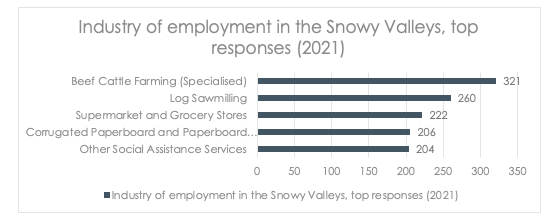
Environmental profile
Wingecarribee Shire has an area of 2,698km2 and is known as the Southern Highlands of New South Wales16. Bounding the Shire is the Illawarra escarpment and Morton National Park with some remnant rainforest and heathland. North of the Shire is characterised by rugged Eucalypt bushland, with gullies, gorges and sandy soils forming part of the catchment for the Sydney water supply as well as three major storage dams (Avon, Nepean and Cordeaux). 17
Traversing the western side of the Shire are the Wollondilly and Wingecarribee Rivers which flow through deep sandstone valleys that form much of the catchment for Warragamba Dam.18 The southern area of the Shire is bounded by the Uringalla Creek and has deep gorges dissecting a sandstone plateau.
The main townships within the Shire are Mittagong, Bowral and Moss Vale, which are predominantly low and medium density residential areas with central business districts, and small enclaves of industry at their outskirts.
The main land use of the Shire is Environmental Management encompassing 37% of the LGA. This is followed by National Parks and Nature Reserves (26%), Environmental Conservation (10%) and Low Density Residential (10%).
Governance profile
The original inhabitants of what is now considered to be Wingecarribee Shire Council were the Gundungurra and Dharawal people. 19
The Council has nine elected Councillors for four-year term. The Mayor is elected by the Councillors and is recognised as the civic leader of the community. 20
The Shire’s main towns are Mittagong, Bowral, Moss Vale and Bundanoon. The smaller villages including Hill Top, Yerrinbool, Colo Vale, Robertson, Berrima, New Berrima, Exeter, Burrawang, Penrose, Willow Vale, Alpine, Balaclava, Renwick, Wingello, Sutton Forest, Avoca, Fitzroy Falls, Balmoral, Medway, Wildes Meadow, Kangaloon, and East Kangaloon.
Hazard Exposure Summary
The LGA is vulnerable to a wide range of natural hazards, making it essential to understand the nature and extent of exposure to people, buildings, infrastructure, services, or natural resources to effectively assess and address associated risks.
Exposure can be seen in various forms:
- Relative exposure is a function of hazard, describing the frequency and magnitude of natural hazard events and capturing the compounding effect of multiple hazards (fire and flood for this analysis). Where a community is subject to both fire and flood, it is potentially less resilient than one exposed to a single hazard of the same frequency and magnitude; and
- The physical exposure of a community is determined such that the quantum of exposed people, buildings, essential facilities, industry, and agriculture can be evaluated. The physical vulnerability of exposed elements is also important, such as the age and construction type of buildings (for example, buildings with raised floors are more resilient to flood as they provide greater protection to the occupants and their belongings, resulting in less loss of life and property); and
- Social vulnerability is determined by examining socio-economic and demographic factors that may exacerbate or ameliorate the effects of an external threat to a person’s life, livelihood, or assets. Examples of these types of indicators include age, occupation, health status, income and education.
The Resilience Blueprint identified the following hazards as relevant hazardous events for the southeast NSW region. In 2024 the State Disaster Mitigation Plan (SDMP) was implemented and any additional hazards or information regarding exposure of hazard in the region has been included below:
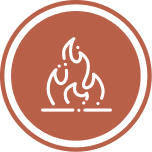 Fire (bush and grass)
Fire (bush and grass)
- A significant proportion of the Shire is mapped as being located in Bushfire Prone Land Vegetation Category 1 (highest risk) and Vegetation Category 2 (lower bush fire risk than Category 1 but higher than the excluded areas;
- Based on potential event probability, annual average loss of residential, commercial and industrial buildings due to bushfire is estimated at 21 per cent. This accounts for low to moderate probability but a high-cost consequence of bushfire activity;
- Extended periods of hot days and very high and above fire danger days will result in an extension of the bushfire period;
- The frequency of dangerous bushfire weather days and the magnitude of bushfire weather extremes will increase in the Shire; and
- Grassfires can become common on hot days and heavy winds.
- Based on potential event probability as modelled by Risk Frontiers, annual average loss of residential, commercial and industrial buildings due to bushfire is estimated at 21 per cent. This accounts for moderate probability but high-cost consequence of bushfire activity.
Actions take or proposed
An action identified in Council’s Local Strategic Planning Statement was to Prepare and implement Bushfire Management Plans for Council bushland reserves to optimise biodiversity while still protecting life and property (long-term goal). 21
A goal of Council’s Community Strategic Plan is to Work together to reduce bushfire risk and better protect the Shire from natural disasters. 22
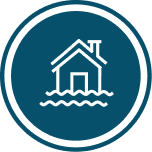 Flooding
Flooding
- Wingecarribee Shire falls within three river catchments being the Hawkesbury – Nepean River Basin, with the eastern portion of the Shire falling in the Wollongong Coast Basin, and the Southern portion of the Shire within the Shoalhaven River basin. In summary:
- The main rivers in the Shire in the Hawkesbury – Nepean River basin include the Wollondilly River, the Wingecarribee River, the Nattai River and the Nepean River.
- The headwater tributaries in the Shoalhaven River basin in the shire include the Kangaroo River and Barrengarry, Wildes Meadow, Yarrunga and Bundanoon creeks
- A small-eastern portion of the Shire is within the Wollongong Coast Basin. There is no major water courses present within the Wingecarribee LGA part of the Wollongong Coast Basin and no know flood consequences
- A number of major dams are located in the Shire, including the Bundanoon Dam, the Fitzroy Falls Dam, Glenquarry Cut Control Structure, Medway Dam, Wingecarribee Dam, the Avon Dam and Nepean Dam. A number of these act as drinking water storages for Greater Sydney.23
- The Wingecarribee River Catchment has experienced several large flood events, including historically large floods in 1897/1898 and 1964. The Berrima Weir recorded major floods in August 1978, April 1988 and August 1990. Major flooding also occurred as a result of several days of heavy rainfall in 2016, flooding houses, isolating communities and claimed one life. The townships of Both Bowral and Berrima are at risk from flooding from the Wingecarribee River. 24
- Based on potential event probability as provided by the Risk Frontiers (2021), annual average loss of residential, commercial and industrial buildings due to flood is estimated at 32 per cent. This accounts for low probability but high-cost consequence of flood activity.
Actions taken or proposed
- Council has undertaken a number of flood studies to be understand and respond to flooding risks within the Shire. A comprehensive list of both the flood studies in progress and flood studies completed by Council as part of their Floodplain Management Program (including both flood studies and mitigation works) can be found online on their website here: https://www.wsc.nsw.gov.au/Environment/Water-in-Our-Shire/Flood-Studies.
- In addition to this, the Wingecarribee Shire Council Local Strategic Planning Statement also denotes as an action that council:
- Undertake Flood and Bushfire studies as the climate shifts to directly inform local planning controls in order to minimise the impact on the community from natural disasters.
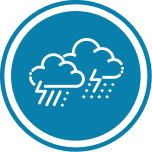 Severe storm (wind, rain, and snow)
Severe storm (wind, rain, and snow)
- Severe storms are one of the most frequent emergencies in NSW, with the season running from September to April generally (though they can occur at any time of year) they can bring destructive winds, heavy rain, large hailstones, and flash flooding. 25
- Based on potential event probability, annual average loss of residential, commercial and industrial buildings due to hail is estimated at 21 per cent. This accounts for low probability but high-cost consequence of hail activity.
Note: for the purposes of this report, cyclone was not commented on.
Actions taken or proposed
Council’s Local Strategic Planning Statement includes, as an action, to “continue to manage the impacts of climate change (such as heat, floods, storms and drought) on Council’s assets and services. 26
 Snow
Snow
- Snowfall forecasts during winter months are increasing. Significant snowfalls within Wingecarribee LGA may have a dramatic impact on the community. A number of communities in the LGA can be affected by snow, including the larger townships of Bowral, Mittagong, and Moss Vale. 27
- The major roads that can be affected by snow in the LGA include the Hume Highway and the Illawarra Highway. 28
- On 17 July 2015, approximately 30cm of snow fell in the LGA, blocking the Hume Highway (in both directions) between Sally’s Corner and Hoddle Crossing. This snow (and the effects of the associated storm) caused some trees to fall onto houses (due to the actual weight of snow on them).29
Actions taken or proposed
- The State Emergency Service (SES) has implemented the South Eastern Region Snow Emergency Sub Plan with key strategies and actions, in conjunction with Council.
 Landslide
Landslide
- Landslide can be triggered by severe weather events (e.g. heavy rainfall) or human activities (vegetation removal, overgrazing, slope modification, etc.). 30
Actions taken or proposed
- No actions have been taken or proposed to address landslide risks within the Shire.
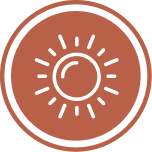 Heatwave
Heatwave
- A heatwave is a prolonged period of 3 or more consecutive days of excessive heat. In Australia excessive heat can vary from 35°C to 42°C. This unusual and uncomfortable hot weather can impact on human and animal health and cause disruption to community infrastructure such as power supply, public transport and services. It is known to affect vulnerable populations, such as those with chronic illnesses, health conditions, and limited or poor mobility, amongst others. 31
Actions taken or proposed
- No actions have been taken or proposed to address heatwave risks within the Shire.
![]() Tsunami
Tsunami
- Tsunami’s can be generated by a number of causes, however, undersea earthquakes are the most likely to generate such an event in NSW. Tsunami waves can run up beyond the high tide mark causing significant damage to coastal areas. 32
- Wingecarribee Shire is not exposed to this hazard, however the tsunami is a hazard for the SE NSW region and may have consequential impacts to the LGA.
Actions taken or proposed
No actions have been taken or proposed for to address tsunami risks within the Shire.
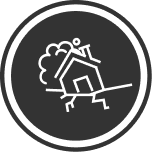 Earthquake
Earthquake
- The LGA has a low earthquake exposure, however it has experienced minor earthquakes in the past;
- Based on potential event probability, annual average loss of residential, commercial and industrial buildings due to earthquakes is estimated at 7 per cent. This accounts for low probability but high cost consequence of earthquake activity.
Actions taken or proposed
Due to low exposure within the LGA, no actions have been taken or proposed to address earthquake risk.
Climate Change Data Summary
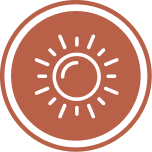
Heatwave – measured by number of days with temperatures greater than 35°C
Heatwaves are a critical climate hazard affecting health, infrastructure, and ecosystems. Heatwave risk can be measured by tracking the number of days per year with maximum temperatures exceeding 35°C. This analysis, undertaken by Risk Frontiers in 2021, drew on 20-year averages from historical climate reanalysis data and future climate model projections under a ‘medium’ emissions scenario, represented by RCP4.5 (see Figure 1 below).
Figure 1: Frequency of days per year with temperature greater than 35 Celsius Degrees
(Values are 20-year averages for present day climate and change for future climate under the RCP4.5 scenario.)
The data highlights how the frequency and seasonality of high-temperature events are expected to shift over time in the LGA, informing the need for climate adaptation in infrastructure, health, and planning decisions.
Key Findings:
- the magnitude of temperature extremes and frequency of hot days will increase for inland LGAs, however the magnitude of temperature extremities will be more apparent in Wingecarribee
- largest increases in heatwave and high temperature extremes will be seen during the summer months
- high temperature extremes will also occur more frequently during spring and autumn.

Drought – measured by Keetch-Byram Drought Index, soil moisture and annual precipitation
Figure 2: Annual mean Keetch-Byram Drought Index (KBDI) drought index value normalised on a scale of 0-10, where 10 is the maximum drought possible
(Values are 20-year averages for present day climate and change for future climate under the RCP4.5 scenario)
- inland LGAs are more exposed and susceptible to drought, especially in LGAs that have lower elevation such as Wingecarribee
- Under future climate, by 2070 the magnitude of drought will increase across all LGAs, with Wingecarribee having significantly less precipitation.
Figure 3: Annual mean soil moisture percentiles; values are calculated relative to present day climate, hence the 50% values for present day. Low values at 2070 are indicative of a drying landscape
(Values are 20-year averages for present day climate and change for future climate under the RCP4.5 scenario)
Figure 4: Total annual precipitation in mm per year
Values are 20-year averages for present day climate and change for future climate under the RCP4.5 scenario
- By 2070 the magnitude of drought will increase across the Council area as soil moisture declines by 2070, with the greatest impact occurring during the winter and spring
- changes in total annual rainfall are less than the projected changes in soil moisture and drought, suggesting that the increase in drought is being driven primarily by increasing temperatures and their effect on evapotranspiration.

Bush and grassfire – measured by the annual maximum Forest Fire Danger Index (FFDI)
Figure 5: Magnitude of bushfire weather severity as represented by the annual maximum FFDI.
(Values are 20-year averages for present day climate and change for future climate under the RCP4.5 scenario)
- the frequency of dangerous bushfire weather days and the magnitude of bushfire weather extremes will increase in Wingecarribee
- the largest changes for bushfire weather across southeast Australia are expected to be occurring during the spring, with a projected earlier onset of the bushfire season under a warmer climate.

Extreme rainfall and flooding –measured by daily precipitation over 30mm
Figure 6: Frequency of very heavy rainfall days (>30mm).
(Values are 20-year averages for present day climate and change for future climate under the RCP4.5 scenario)
- Under present day climate there are on average 4 very heavy rainfall days per year. This may change by 2070 with an expected warmer atmosphere modelled to increase high storm rainfall totals
- the primary driver of year-to-year variability in rainfall will continue to be the tropical climate drivers of Indian Ocean Dipole (IOD), El Niño Southern Oscillation (ENSO) and the Inter-decadal Pacific Oscillation (IPO). Projections for Pacific climate are indicating an increase in ENSO amplitude, meaning both El Niño and La Niña events will be stronger
- extreme rainfall events will produce higher rainfall totals due to the physical relationship between a warmer temperatures and higher atmospheric moisture capacity.
- higher rainfall totals may lead to higher flood levels during flooding events, but the frequency of these events will not differ significantly from present.

Severe storm, wind and hail – measured by East Coast Low (ECL) days and annual windspeed
Figure 7: Frequency of east coast low days.
(Values are 20-year averages for present day climate and change for future climate under the RCP4.5 scenario)
Figure 8: Annual maximum windspeed (km/hr).
(Values are averaged across each LGA and calculated as 20-year averages for present day climate and change for future climate under the RCP4.5 scenario—windspeeds at individual locations and years will be significantly higher than the averages.)
- Under present day climate, the Council area is exposed to several types of storms, including east coast lows (ECL), extra-tropical lows, fronts, snowstorms, thunderstorms, and hailstorms
- ECL are one of the most damaging storm types to impact the Council area. ECL frequency is expected to increase slightly under future climate which is consistent with an expectation of increased large scale interactions between warm and cool air masses as the climate warms
- storms tend to be more frequent during La Niña events and less frequent during El Niño events. This relationship is not expected to change under a warming climate.
- extratropical lows and associated fronts and thunderstorms can cause significant risk, especially during summertime when they are a primary cause of dangerous bushfire weather
NarCLIM 2.0 Climate projections
In 2022 NARCliM 2.0 climate data was publicly released – this is the most up-to-date regional climate modelling available for NSW and ACT and is used Government planning, assessments, and strategies.
The following table describes the anticipated future climate projections specific to Wingecarribee Shire based on NARCLiM 2.0 RCP4.5 (medium emissions) and RCP8.5 (high emissions) scenarios.
This information can also be viewed through an interactive climate change projection map via https://www.climatechange.environment.nsw.gov.au/projections-map.
Table 2: NARCLiM 2.0 Emission Scenario projections – Wingecarribee
Risk Exposure Summary
Hazards
A hazard is a natural process or occurrence, a source event which has the potential to result in harm or cause loss or damage depending on exposure. The South Eastern Regional Emergency Management Plan has identified the following hazards as having risk of causing loss of life, property, utilities, services and/or the community’s ability to function within its normal capacity:
|
|
|
In 2024, the State Disaster Mitigation Plan identifies these additional 3 hazards having the same risk to life and property:
- Coastal hazard (erosion and inundation);
- Storms and cyclones; and
- Tsunami34
Climate modelling helps us to examine the implications for hazard likelihood. The Climate modelling performed by Risk Frontiers as part of the Resilience Blueprint found that Wingecarribee has:
- moderate/medium flood hazard risk with 17.02% of the land within a modelled floodplain. This follows various systems draining into several large waterbodies within the Shire including the Wingecarribee Reservoir, Lake Nepean and Fitzroy Falls Reservoir. Systems traversing the Shire include the Wingecarribee and Nattai Rivers, as well as Joadja and Bundanoon Creek (Figure 9)
- moderate/medium bush and grassfire hazard risk with a modelled annual burning probability of 0.93%. This risk area is largely concentrated to Nattai National Park and in Mount Lindsey area in the northern quadrant of the Shire (Figure 10).
Figure 9: Wingecarribee Flood Hazard Index
A dark blue indicates a flood plain, the lighter colour out of it.
The flood hazard index uses a map of modelled flood plains identified by several geographical/geospatial variables including different river types, river stream order, distance to river network, land cover, soil type, average slopes in known flood areas, relative changes in elevation near rivers, and river basin characteristics.
Figure 10: Wingecarribee Bushfire Hazard Index
Life, Property, Economic and Environmental Loss Risk
Fatalities and life loss
Figure 11: Wingecarribee Fatalities from Natural Hazard
As shown in Figure 11, the risk that is posed to life is very difficult but a reality to of natural hazards. From a human health perspective, life loss throughout the region from 1900 to 30 June 2020 has been analysed using PerilAUS, Risk Frontiers’ database of natural hazard impacts. The analysis found that in Wingecarribee, both bushfires and floods have resulted in the most fatalities – 5 fatalities each, followed by gusts (4 fatalities), lightning (3 fatalities), and landslide (2 fatalities). It is noted that there are an extra two deaths for which the exact location could not be identified.
Despite the above, more lives have been lost as a result of the impacts of disaster events across the Shire in the days, weeks, months and years that follow. The physical and mental health toll of events is enormous. It also does not capture cascading health issues and fatalities. Data in these regards is difficult to bring together but does not change the reality of the pervasive impact of disasters.
Impact on Property and Infrastructure
In terms of the risks posed to property and infrastructure, Risk Frontiers’ Natural Catastrophe loss models have been used to estimate the financial cost, or Average Annual Loss (AAL) across four key hazards in the Shire being bushfire, flood, hailstorm and earthquake. The models evaluated losses for commercial, residential and industrial properties.
Under current conditions, the overall baseline AAL for Wingecarribee is approximately $4.2 million and the analysis found that hailstorm is the most significant natural hazard accounting for 46% of the AAL, followed by bushfire (24%) and flood (21%) as shown in Figure 12 below.
Figure 12: Distribution of the Average Annual Loss (AAL) of infrastructure by hazard for Wingecarribee
Average Annual Loss identified in the State Disaster Mitigation Plan
Additionally, the indicates that the AAL in Wingecarribee Shire for built environment in 2023 consisted of the following:
- Coastal hazard (erosion and inundation) – Very Low
- Storms – Low
- Cyclones – Very Low
- Tsunami – not recorded but noted as a rare event
Editors note: the SDMP does not include specific AAL per LGA. It is colour coded on a scale from $0m to $112m.
Environmental Loss Risk
Risks to threatened flora, fauna and ecological communities from fire and flood were analysed using the following values:
|
|
|
The fire and flood indices were overlaid with an exposure index locating threatened flora, fauna and ecosystems along with agricultural lands. The analysis found that there are:
- Fauna exposure is high. There are 24 different vulnerable animal species in the region, of which 13 are vulnerable, 6 are endangered, and 5 are critically endangered.
- Flora exposure is high. There are 46 different vulnerable plant species in the region, of which 30 are vulnerable, 15 are endangered and 1 is critically endangered.
- Ecological community exposure is moderate. There are 8 different vulnerable ecological communities in the region, of which 2 are endangered and 6 are critically endangered.
The analysis also that the natural environment encompasses 61.24% of the region (27.15% of which is protected), 23.07% devoted to agriculture and farming and the remaining 15.69% is developed built environment.
The total maximum above ground biomass (indicating the potential vegetation density the LGA could support) is moderate with 3,428 tonnes of dry matter over the LGA. The overall exposure of Wingecarribee’s environment is moderate/medium as seen in Figure 13 below.
Agricultural Productivity
While there are no significant changes for rainfall, worsening drought conditions associated with warming temperatures and frequency of hot days will directly lead to lower overall soil moisture as seen in Table 1. A projected decrease in soil moisture from a warmer climate may impact beef, diary and agriculture productivity in Wingecarribee.
There is a correlation between agricultural productivity and climate parameters representing temperature and hydroclimate variability. Productivity for beef and dairy operations tends to be higher during years that are wetter and cooler with retained soil moisture, and low risk of consecutive dry days. This correlation is particularly significant for dairy, but not as significant for beef however, there are there are sensitivities to hot days and drought conditions as shown in Figure 14 below.
Figure 14: Correlation between Agricultural Operations and Climate Parameters in Wingecarribee
Vulnerability and Capacity
Resilience is generally regarded as a function of the intersection of relative exposure, social vulnerability and community capacity:
- Relative exposure is a function of hazard, describing the frequency and magnitude of natural hazard events and capturing the compounding effect of multiple hazards (fire and flood for this analysis).
- Physical exposure of a community is determined such that the quantum of exposed people, buildings, essential facilities, industry, and agriculture can be evaluated.
- Social vulnerability is determined by examining socio-economic and demographic factors that may exacerbate or ameliorate the effects of an external threat to a person’s life, livelihood, or assets.
- Community capacity to resist, avoid and / or adapt to a disaster and to use these abilities to create security either before or after a disaster can be determined by examining several factors.
For each of these measurement framework indicators, an index has been produced by a weighted average of each metric contributing to the category. An analysis of the measurement framework indicators for each Statistical Area 1 (SA1) across South East NSW culminates as an integrated index of resilience; Figure 15 and Figure 16 shows community resilience indices for Wingecarribee.
In Wingecarribee:
- the mean relative exposure component of the resilience index is average for bush/grass fire and high/extremely high for flood. There are no SA1s scoring low to extremely low for the relative exposure component of resilience to either bush/grass fire or flood (see Figure 17 and Figure 18 below);
- 9% of the population resides in SA1s scoring low or worse for relative exposure of resilience to bush/grass fire or flood;
- The Council area’s mean social vulnerability score is average. 5.4% of the population score low or worse for the social vulnerability component of resilience (see Figure 19 below); and
- The mean community capacity component of the resilience index is high average for bush/grass fire, and high for flood. There are no SA1s scoring low to extremely low for the community capacity component of resilience to either bush/grassfire or flood (see Figure 20 and Figure 21 below).
Gaps in Data
While this local profile is underpinned by robust regional data and hazard modelling, several key data gaps remain that limit the precision of localised risk reduction planning:
- Community preparedness and capacity indicators: No recent community survey data exists on disaster readiness, access to emergency plans, or levels of volunteering in disaster response organisations.
- Historical event records: Detailed local records on the frequency, impacts, and recovery costs of past snow, storm, hail, and earthquake events are limited or not centralised.
- Economic disruption data: There is insufficient insight into how previous disasters have impacted the local economy, particularly small businesses, tourism, and agricultural supply chains.
- Infrastructure interdependencies: Modelling on critical infrastructure interdependencies (e.g., how flood risk to roads affects emergency access or supply deliveries) is not available at the LGA level.
- Monitoring and evaluation systems: Council currently lacks a framework to consistently track resilience outcomes over time, including climate impact monitoring and post-disaster recovery effectiveness.
- Integration of hazard overlays into planning instruments: While hazard data exists (e.g., fire and flood overlays), there is limited evidence that these are fully embedded within the Local Environmental Plan (LEP) or Development Control Plan (DCP), limiting the effectiveness of risk-informed development controls.
- Local Flood Sub-Plan: The Wingecarribee Local Flood Emergency Sub-plan (Volume 2: Hazard and Risk in Wingecarribee Shire) was prepared in 2017. It is suggested that this be updated to account for recently completed flood studies and new flood data.
Reference
- .id consulting Pty Ltd, 2025, ‘Welcome to Wingecarribee Shire Community Profile’. Available online at https://profile.id.com.au/wingecarribee
- Australian Bureau of Statistics, 2021, Wingecarribe 2021 Census All persons QuickStats. Available online at https://abs.gov.au/census/find-census-data/quickstats/2021/LGA18350
- .id consulting Pty Ltd, 2021, ‘Welcome to Wingecarribee Shire Community Profile’. Available online at https://profile.id.com.au/wingecarribee
- .id consulting, 2025, ‘Wingecarribee Shire Population and dwellings’. Available online at https://profile.id.com.au/wingecarribee/population
- Ibid.
- .id consulting, 2025, ‘Wingecarribee Shire Service age groups’. Available online at https://profile.id.com.au/wingecarribee/service-age-groups
- Ibid
- .id consulting, 2025, ‘Wingecarribee Shire Need for assistance’. Available online at https://profile.id.com.au/wingecarribee/assistance
- [1] .id consulting Pty Ltd, 2025, ‘Wingecarribee Shire: Overseas arrivals’. Available online at https://profile.id.com.au/wingecarribee/overseas-arrivals
- .id consulting Pty Ltd, 2025, ‘Welcome to Wingecarribee Shire Community Profile’. Available online at https://profile.id.com.au/wingecarribee
- Wingecarribee Shre Council Local Emergency Management Committee, 2024, ‘Wingecarribee Shire Council Local Emergency Management Plan’. Available online at https://www.wsc.nsw.gov.au/files/assets/public/v/2/council/strategies-amp-plans/wingecarribee-shire-council-emergency-management-plan-emplan.pdf
- .id consulting Pty Ltd, 2025, ‘Wingecarribee Shire: Agriculture’. Available online at https://economy.id.com.au/wingecarribee/value-of-agriculture
- .id consulting Pty Ltd, 2025, ‘Wingecarribee Shire: Employment by industry (total)’. Available online at https://economy.id.com.au/wingecarribee/employment-by-industry
- .id consulting Pty Ltd, 2025, ‘Wingecarribee Shire: Worker productivity’. Available online at https://economy.id.com.au/wingecarribee/worker-productivity-by-industry
- .id consulting Pty Ltd, 2025, ‘Wingecarribee Shire: Gross Regional Product’. Available online at https://economy.id.com.au/wingecarribee/gross-regional-product
- Wingecarribee Shre Council Local Emergency Management Committee, 2024, ‘Wingecarribee Shire Council Local Emergency Management Plan’. Available online at https://www.wsc.nsw.gov.au/files/assets/public/v/2/council/strategies-amp-plans/wingecarribee-shire-council-emergency-management-plan-emplan.pdf
- Ibid.
- Ibid.
- Wingecarribee Shire Council, 2025, ‘Aboriginal and Torres Strait Islander Community’. Available online at https://www.wsc.nsw.gov.au/Places/Our-Community/Aboriginal-and-Torres-Strait-Islander-Community
- Wingecarribee Shire Council, 2025, ‘Councillors’. Available online at: https://www.wsc.nsw.gov.au/Council/About-Council/Councillors
- Wingecarribee Shire Council, 2021, ‘Local Strategic Planning Statement’. Available online at https://www.wsc.nsw.gov.au/files/assets/public/v/1/council/strategies-amp-plans/wingecarribee-local-strategic-planning-statement.pdf
- Wingecarribee Shire Council, 2021, ‘Community Strategic Plan’. Available online at https://www.wsc.nsw.gov.au/files/assets/public/v/1/council/strategies-amp-plans/community-strategic-plan-april-2023.pdf
- NSW State Emergency Service, 2024, ‘Local Flood Emergency Sub-Plan’. Available online at https://www.ses.nsw.gov.au/sites/default/files/document/wingecarribee-shire-lfp-feb-2024-endorsed.pdf
- Ibid.
- Wingecarribee Shire Council, 2025, ‘Storms’. Available online at https://www.wsc.nsw.gov.au/Residents/Emergency-Information/Floods-and-Storms/Storms
- Wingecarribee Shire Council, 2021, ‘Community Strategic Plan’. Available online at https://www.wsc.nsw.gov.au/files/assets/public/v/1/council/strategies-amp-plans/community-strategic-plan-april-2023.pdf
- South Eastern Region Emergency Management Committee, 2023, ‘South Eastern Region Snow Emergency Sub Plan’. Available online at https://www.ses.nsw.gov.au/sites/default/files/document/south-eastern-regional-snow-plan-nov-2023-endorsed.pdf
- Ibid.
- Ibid.
- NSW Reconstruction Authority, 2024, ‘State Disaster Mitigation Plan 2024-2026’. Available online https://www.nsw.gov.au/sites/default/files/noindex/2024-02/State_Disaster_Mitigation_Plan_Full_Version_0.pdf
- Wingecarribee Shire Council, 2025, ‘Heatwaves’. https://www.wsc.nsw.gov.au/Residents/Emergency-Information/Heatwaves
- NSW State Emergency Service, 2023, ‘New South Wales State Tsunami Plan’. Available online at https://www.nsw.gov.au/sites/default/files/noindex/2024-02/2023_NSW_State_Tsunami_Plan.pdf
- South East Regional Emergency Management Committee, 2021, South Eastern Emergency Management Plan 2021 (updated 2023). Available online at https://www.nsw.gov.au/sites/default/files/noindex/2023-10/South_East_Region_EMPLAN_v2.1.pdf
- NSW Reconstruction Authority, 2024, State Disaster Mitigation Plan 2024-2026. Available online https://www.nsw.gov.au/sites/default/files/noindex/2024-02/State_Disaster_Mitigation_Plan_Full_Version_0.pdf



























